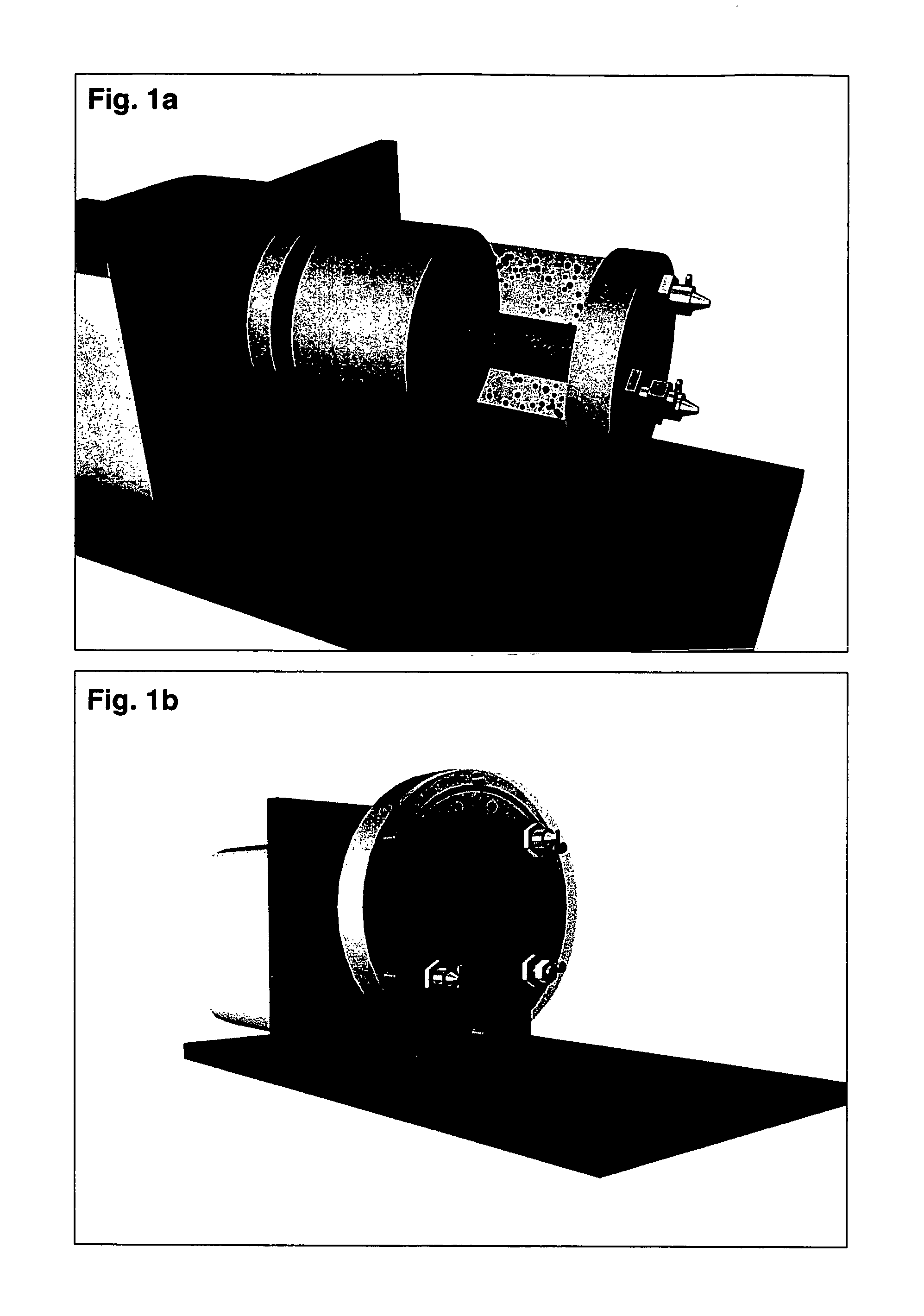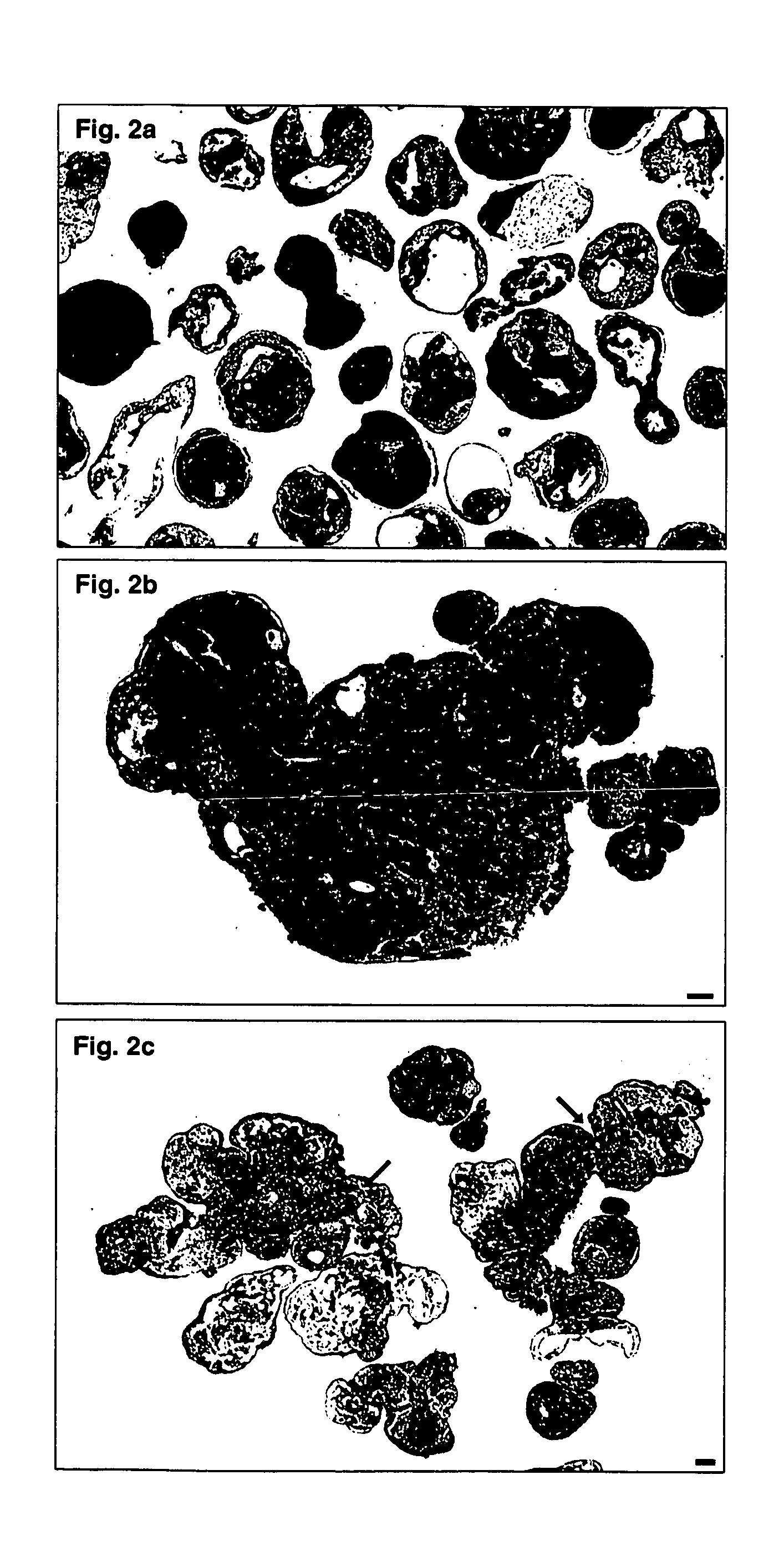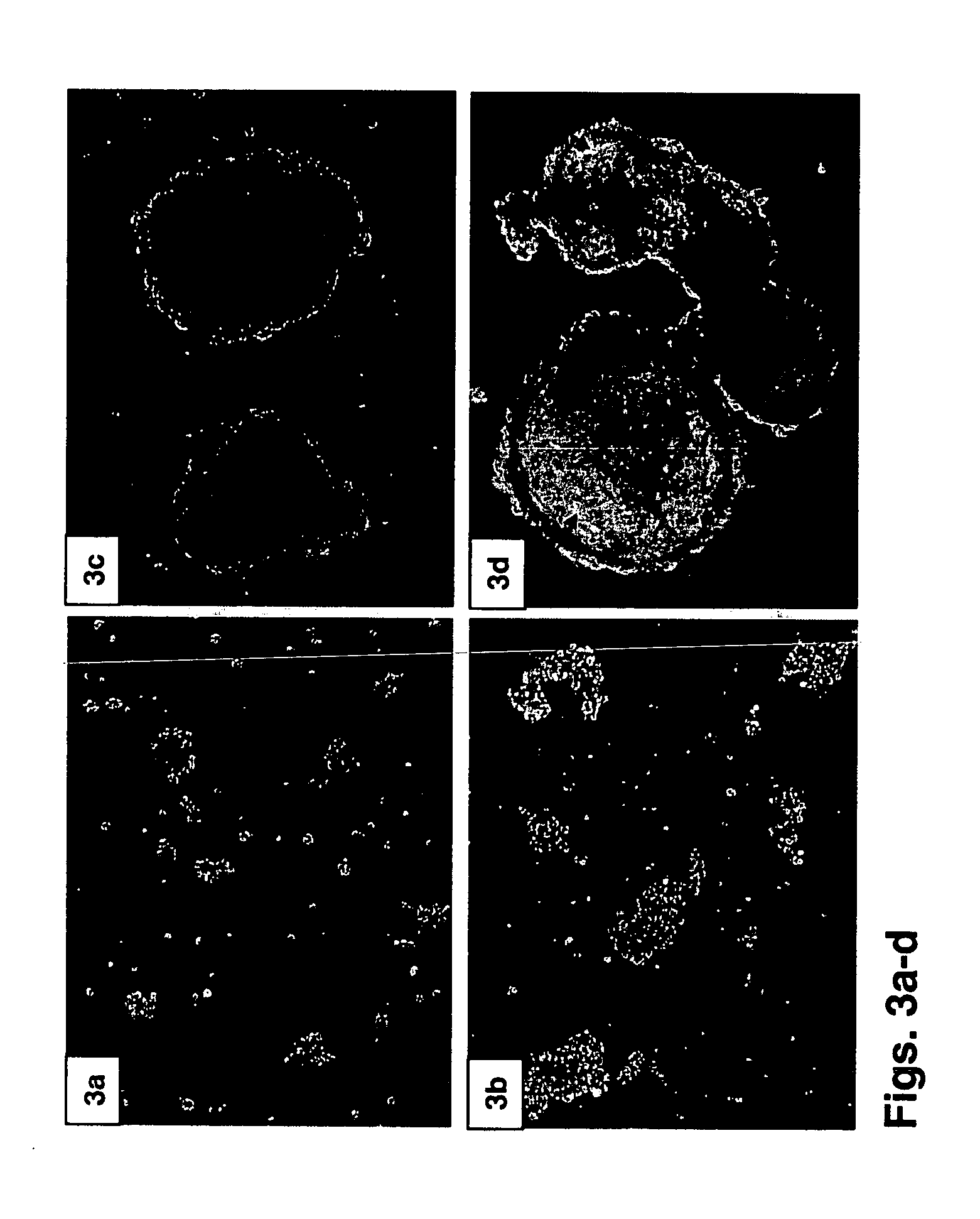Method of dynamically culturing embryonic stem cells
a technology of embryonic stem cells and culturing methods, applied in the field of dynamic culturing human embryonic stem cells, can solve the problems of large cell clumps, inability to large-scale clinical production, purity and reproducibility of eb,
- Summary
- Abstract
- Description
- Claims
- Application Information
AI Technical Summary
Benefits of technology
Problems solved by technology
Method used
Image
Examples
example 1
Dynamic Culture of Human Embryonic Stem Cells for the Formation of Human Embryoid Bodies
[0167] According to the current practice, the formation of embryonic bodies (EBs) involves the aggregation of multiple hES cells via a static growth of ES cultures, a procedure which results in large aggregates with necrotic centers. The following example illustrates a novel approach for dynamically generating hEBs thereby allowing large-scale production of small-size EBs suitable for therapeutic applications.
[0168] Materials and Methods:
[0169] Human ES Cell cultures—Undifferentiating hESCs [H9.2 passages 36-60 (Amit et al., 2000)] were grown on an inactivated mouse embryonic feeder layer (MEF) with culture medium consisting of 80% knockout (KO) DMEM (Gibco-Invitrogen Co.) supplemented with 20% (v / v) defined fetal bovine serum (FBSd; HyClone, Utah, USA), 1 mM L-glutamine, 0.1 mM mercaptoethanol, and 1% non-essential amino acid stock (all from Gibco-Invitrogen Co.). The hESCs were fed daily wit...
example 2
EB Formation is More Efficient in the STLV Bioreactor Than in Static Cultures
[0181] To examine the efficiency of hEBs formation using the STLV bioreactor the number of hEBs and the DNA and protein contents were determined.
[0182] Materials and Methods
[0183] Medium sampling and analysis—Human ESCs were cultured using either the STLV bioreactor or the static cultures. Every third-fifth day 70% of the medium was replaced according to manufacture instructions. Shortly, vessels were stopped and aggregates were allowed to settle down. Triplicate samples from the medium were immediately analyzed for pO2, pCO2, pH, glucose and lactic acid levels using Blood Gas Analyzer, (StatProfile M, Nova Biomedical, Boston) or stored at −70° C. for analysis of lactate dehydrogenase (LDH) activity (Hitachi Modular P800, Tokyo, Japan). Glucose consumption at a given time point was determined from the medium concentration of glucose taking into account the 70% volume replacement of the medium.
[0184] Bio...
example 3
The STLV Bioreactor is Suitable for EB Differentiation
[0200] To further examine the suitability of the STLV and HARV bioreactors to support EB differentiation, one-month-old EBs were subjected to histological staining, immunohistochemistry and RT-PCR analyses.
[0201] Materials and Methods
[0202] Immunohistochemistry—Immunostaining was preformed following deparaffinization of histological sections using the Dako LSAB®+ staining kit for anti glial fibrillary acidic protein (GFAP), anti CD34 and somatostatin (all from Dako Corp, Carpenteria, Calif., USA) according to manufacturer's instructions. Both IgG isotypes and secondary antibody staining were used as controls.
[0203] Reverse transcription (RT)-PCR analysis—Total RNA was extracted from hEBs using the TriReagent (Sigma) according to manufacturer's instructions. To ensure no DNA contamination, RNA samples were treated with DNA free kit (Ambion Inc., Austin, Tex., USA) and examined for DNA contamination prior to performing the RT r...
PUM
| Property | Measurement | Unit |
|---|---|---|
| volume | aaaaa | aaaaa |
| diameter size | aaaaa | aaaaa |
| volume | aaaaa | aaaaa |
Abstract
Description
Claims
Application Information
 Login to View More
Login to View More - R&D
- Intellectual Property
- Life Sciences
- Materials
- Tech Scout
- Unparalleled Data Quality
- Higher Quality Content
- 60% Fewer Hallucinations
Browse by: Latest US Patents, China's latest patents, Technical Efficacy Thesaurus, Application Domain, Technology Topic, Popular Technical Reports.
© 2025 PatSnap. All rights reserved.Legal|Privacy policy|Modern Slavery Act Transparency Statement|Sitemap|About US| Contact US: help@patsnap.com



